Table of Content
- What Are Fly Ash Bricks?
- Advantages of Fly Ash Bricks
- Disadvantages of Fly Ash Bricks
- What Are Traditional Bricks?
- Advantages of Traditional Bricks
- Disadvantages of Traditional Bricks
- Fly Ash Bricks vs Traditional Bricks: A Quick Comparison Table
- Installation & Ease of Use
- Regulatory Standards & Certifications
- Future of Brick Technology
- Conclusion
Choosing the right bricks is one of the most important decisions when planning your dream home. The type of brick you use impacts everything from durability and structural strength to cost, sustainability, and overall aesthetics. In India, the most commonly used bricks today are fly ash bricks and traditional red bricks. Understanding the differences between these two can help you make an informed decision that aligns with your construction goals.
In this guide, we explore Fly Ash Bricks vs Traditional Bricks, comparing their properties, advantages, disadvantages, costs, and sustainability. By the end, you’ll have a clear understanding of which brick type suits your home renovation or construction project best.
What Are Fly Ash Bricks?
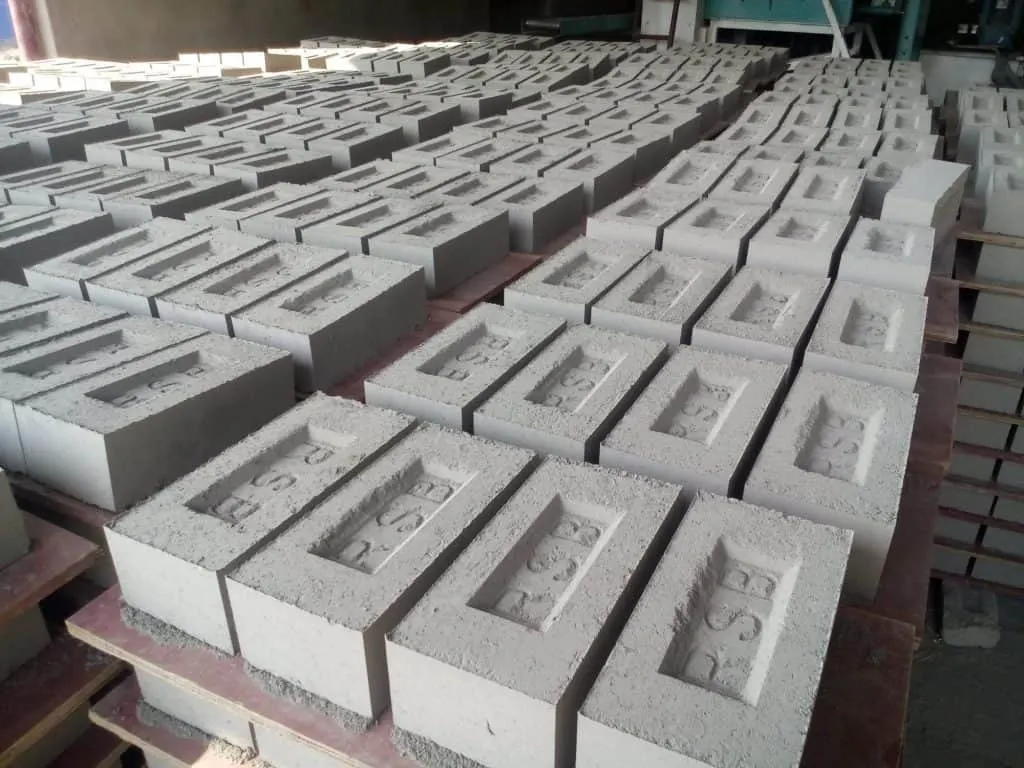
Fly ash bricks are made by combining fly ash a byproduct of coal-fired power plants with cement, sand, water, and sometimes other additives. These materials are compressed under high pressure and then cured using steam or water, producing uniform, lightweight, and durable bricks.
Key Properties of Fly Ash Bricks:
- High compressive strength: 75–100 kg/cm²
- Uniform size and smooth finish: Makes construction faster and cleaner
- Reduced water absorption: 6–12%
- Lightweight: Easier to handle and transport
- Eco-friendly: Utilizes industrial waste and reduces clay consumption
Fly ash bricks have become increasingly popular because they combine strength with sustainability. They are ideal for modern construction, especially where uniformity and energy efficiency are priorities.
Also Read: How to Choose the Right Brick Size and Type for Your Dream Home
Advantages of Fly Ash Bricks
- Environmental Benefits:
Fly ash bricks use industrial waste, reducing the need for clay extraction. This makes them an eco-friendly alternative to traditional bricks. - Cost-Effectiveness:
Due to their uniform size and smooth surface, fly ash bricks require less mortar and plaster. Faster installation further reduces labor costs. - Durability & Strength:
Higher compressive strength and lower water absorption make these bricks highly durable and suitable for load-bearing structures. - Thermal Insulation:
Fly ash bricks provide better insulation compared to red bricks, making them energy-efficient in extreme climates. - Lightweight & Easy Handling:
Their lower weight simplifies transportation and on-site handling, speeding up construction projects.
Disadvantages of Fly Ash Bricks
While fly ash bricks have many advantages, there are a few limitations:
- Smoother surfaces may reduce natural bonding with mortar; construction additives may be required.
- Limited availability in certain regions compared to red bricks.
- Less traditional aesthetic appeal, which might matter in heritage-style or rustic designs.
What Are Traditional Bricks?
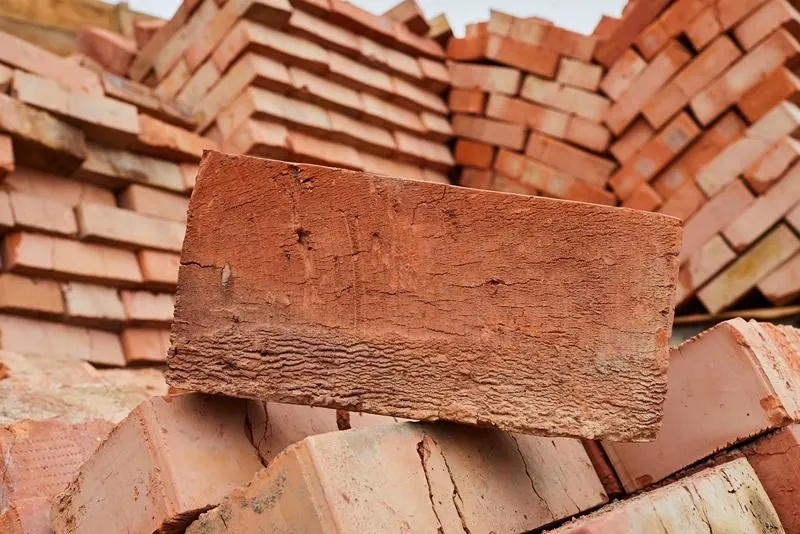
Traditional bricks, also known as red bricks or clay bricks, are made by molding natural clay and firing it in kilns at high temperatures. This age-old method has been used for centuries and is widely trusted across India.
Key Properties of Traditional Bricks:
- Compressive strength: 30–35 kg/cm²
- Water absorption: 20–25%
- Density: Higher than fly ash bricks, around 1800–2000 kg/m³
- Aesthetics: Classic reddish-brown color with rough texture
Red bricks are known for their rustic charm and strong bonding with mortar, making them a familiar choice for many builders and homeowners.
Advantages of Traditional Bricks
- Aesthetic Appeal: Provide a classic and rustic appearance, suitable for traditional architecture.
- Widespread Availability: Easily sourced across India without restrictions.
- Strong Bond with Mortar: Rough surface texture ensures excellent adhesion, improving structural stability.
Disadvantages of Traditional Bricks
- High Water Absorption: Makes them prone to damage from moisture over time.
- Irregular Size: Leads to higher wastage and labor-intensive construction.
- Environmental Concerns: Clay extraction and kiln firing consume energy and degrade soil.
- Heavy & Hard to Transport: Adds to handling difficulties and transportation costs.
Fly Ash Bricks vs Traditional Bricks: A Quick Comparison Table
|
Feature |
Fly Ash Bricks |
Traditional (Red) Bricks |
|
Material |
Fly ash, cement, sand |
Clay |
|
Strength |
75–100 kg/cm² |
30–35 kg/cm² |
|
Density |
1700–1850 kg/m³ |
1800–2000 kg/m³ |
|
Water Absorption |
6–12% |
20–25% |
|
Weight |
~2.6 kg |
~3.5 kg |
|
Environmental Impact |
Eco-friendly, uses waste |
High clay consumption, energy-intensive |
|
Cost per brick |
₹4–6 |
₹5–8 |
This table summarizes the key differences to help you quickly assess which brick type fits your needs.
Installation & Ease of Use
Fly Ash Bricks:
Uniform size and lighter weight make them faster to lay, requiring less mortar. Construction is cleaner, more precise, and often less labor-intensive. Builders may use construction additives, such as Clay Bricks Hardener, to enhance bonding and durability.
Traditional Bricks:
Irregular shapes and higher weight demand skilled labor and additional mortar. Construction is slower, and careful handling is required to maintain alignment and reduce wastage.
Also Read: Choosing the Best Cement for Construction: Types and Usage
Regulatory Standards & Certifications
Fly Ash Bricks: Must comply with environmental clearance guidelines and state pollution norms. Their production often aligns with sustainable construction standards.
Traditional Bricks: Follow IS 1077:1992 for clay bricks. Environmental concerns are rising due to clay extraction and high energy consumption during firing.
Future of Brick Technology
The construction industry is increasingly adopting eco-friendly and automated solutions. Fly ash bricks are likely to dominate because of their sustainability, uniformity, and cost-effectiveness. Innovations like mobile brick-making machines, advanced curing processes, and chemical additives enhance performance while reducing environmental impact.
Conclusion
Choosing between fly ash bricks vs traditional bricks depends on your priorities: sustainability, strength, aesthetics, and budget.
- Fly ash bricks are ideal for modern construction projects requiring consistency, energy efficiency, and lower costs.
- Traditional red bricks offer timeless aesthetics, strong mortar bonding, and widespread availability but are labor-intensive and less environmentally friendly.
Consulting with construction experts can help you select the best option for your home, ensuring structural integrity, cost savings, and a design that aligns with your vision.

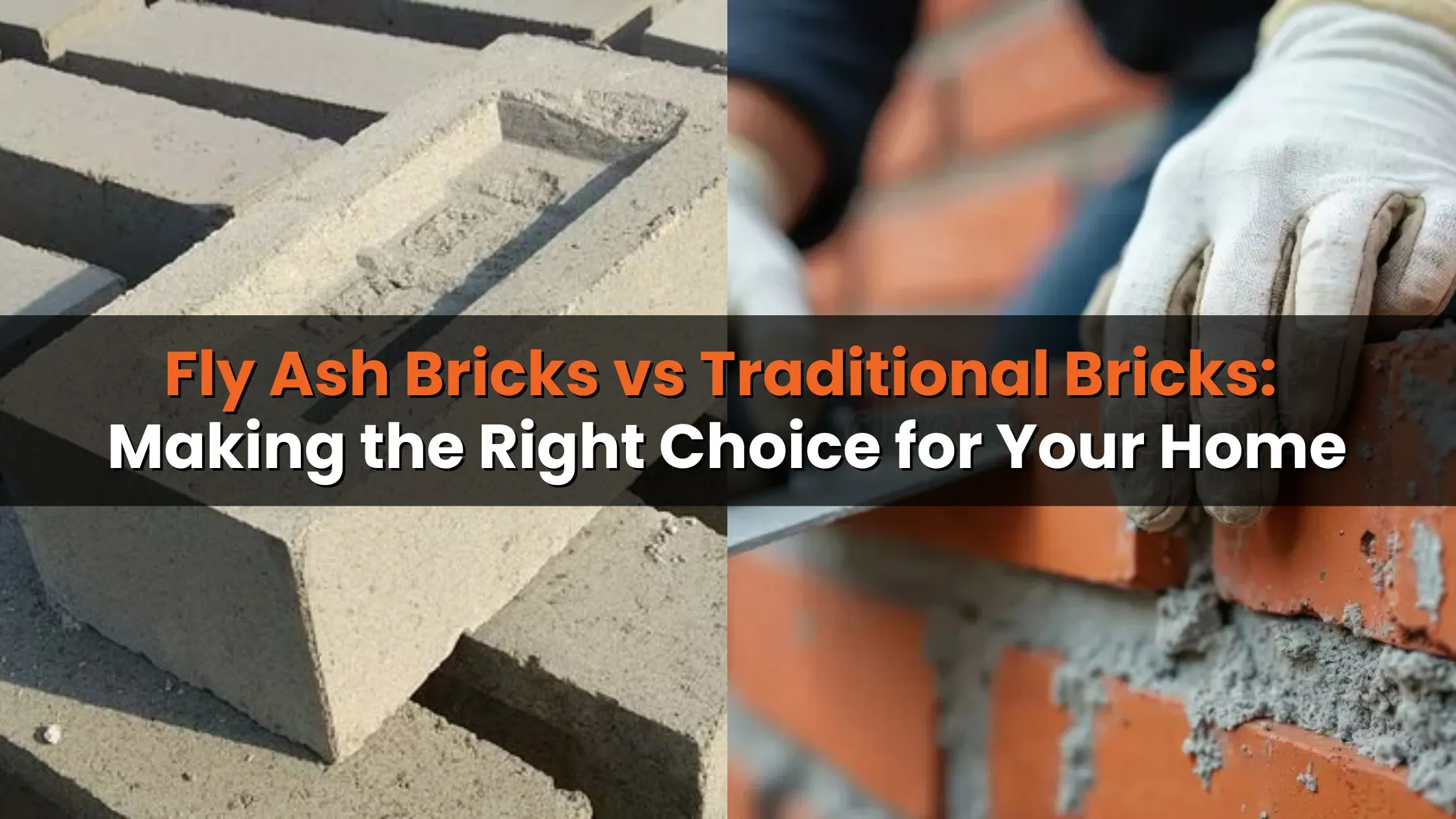

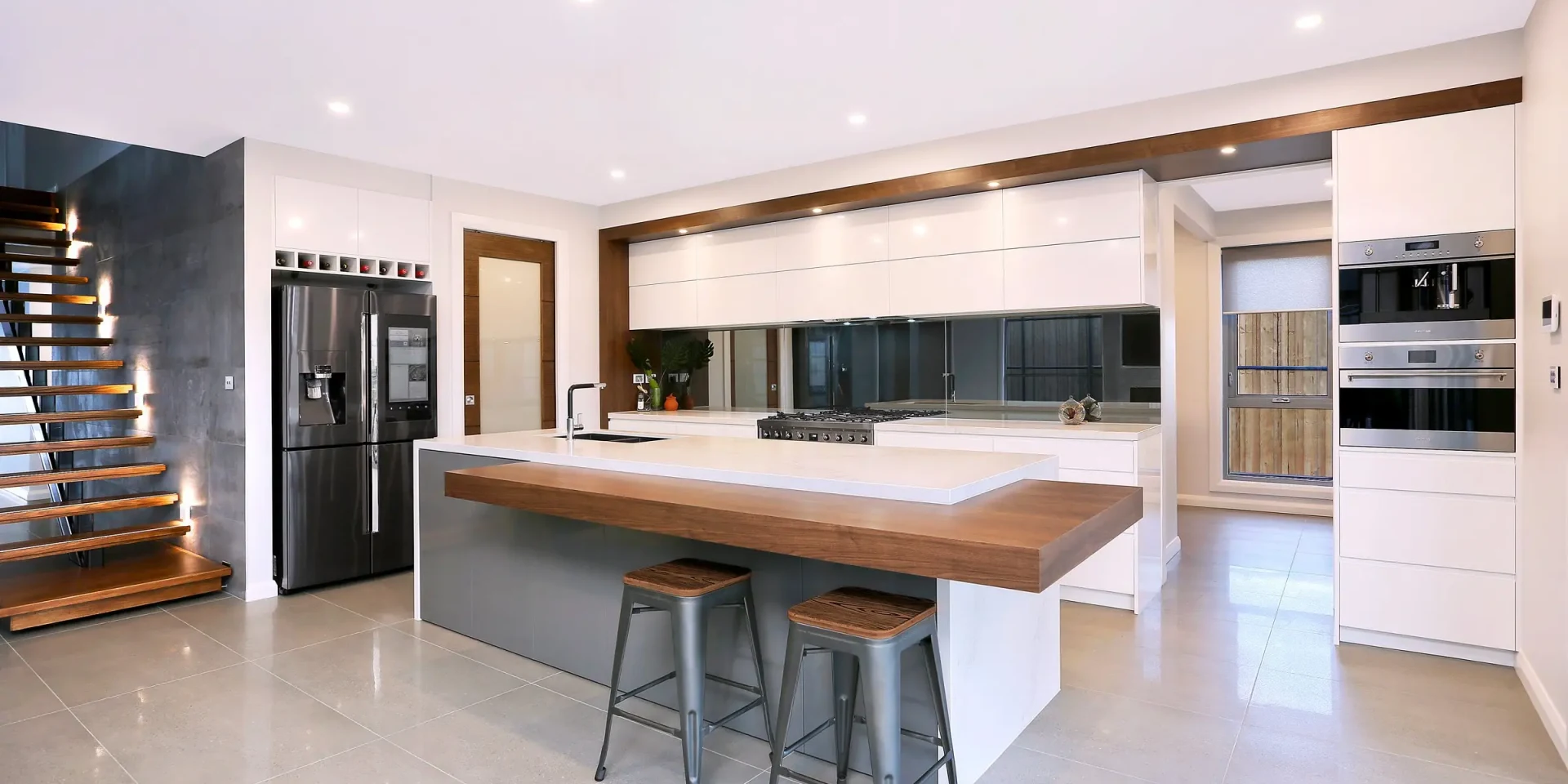

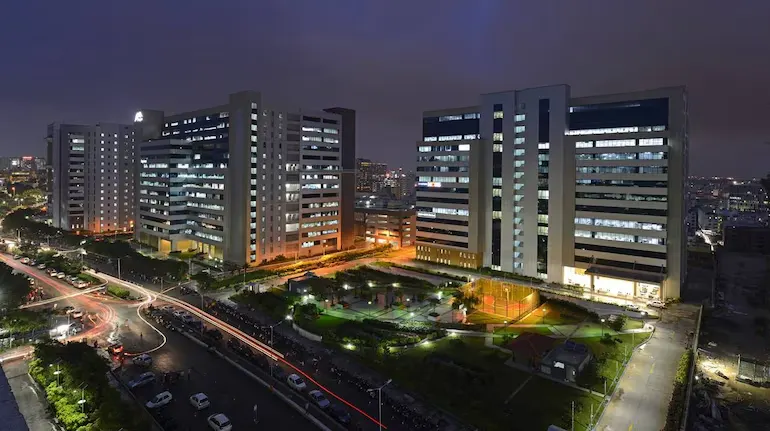
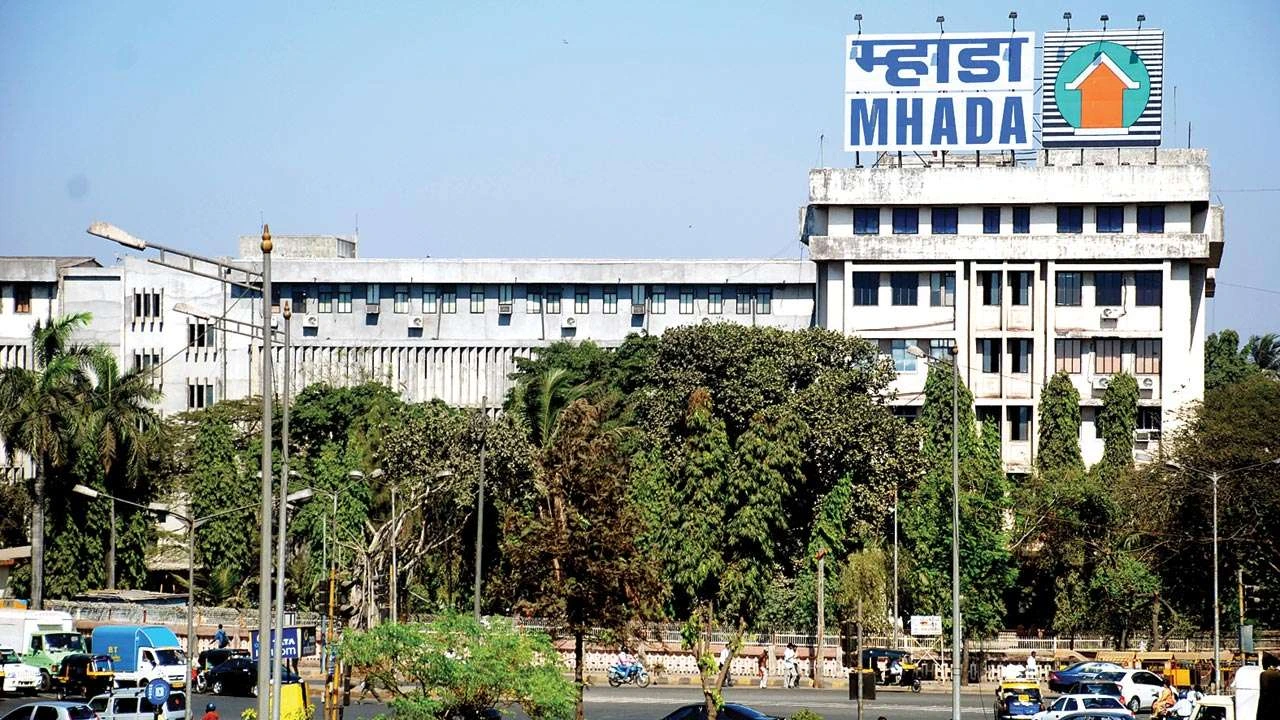
_1765272256.webp)
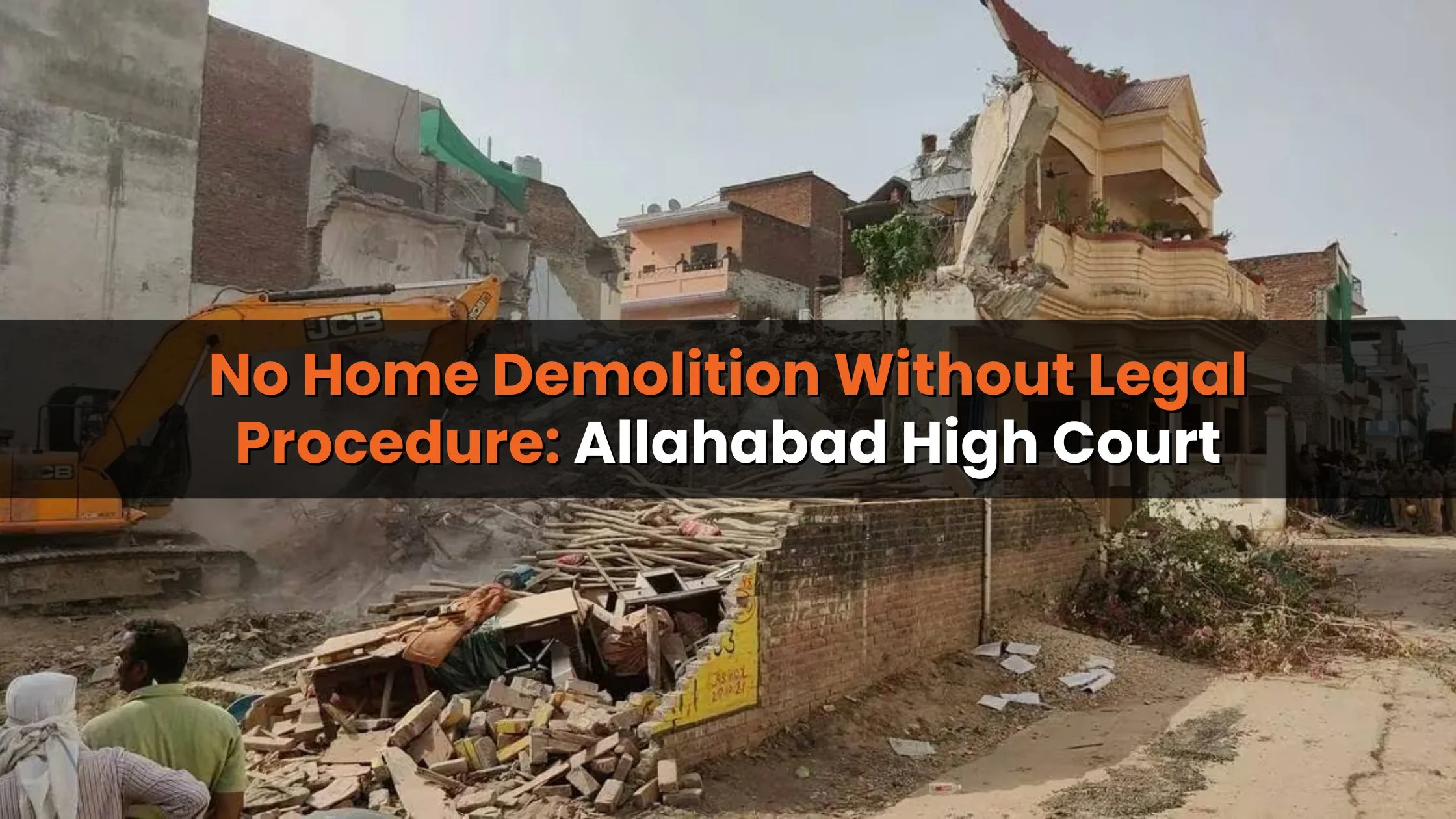


Ans 1. Fly ash bricks are made using fly ash a byproduct of coal-fired power plants mixed with cement, sand, and water. They are compressed and cured to create uniform, lightweight, and durable bricks suitable for modern construction.
Ans 2. Fly ash bricks are lighter, have higher compressive strength (75–100 kg/cm²), lower water absorption (6–12%), and are eco-friendly. Traditional red bricks are heavier, have lower strength (30–35 kg/cm²), higher water absorption (20–25%), and are made from clay.
Ans 3. Yes. Fly ash bricks utilize industrial waste, reducing clay extraction and energy consumption, whereas traditional red bricks involve energy-intensive kiln firing and extensive clay use.
Ans 4. Fly ash bricks are generally more cost-effective due to their uniform size, faster installation, and reduced mortar requirements. Prices range from ₹4–6 per brick, while traditional bricks cost around ₹5–8 per brick.
Ans 5. Yes. Fly ash bricks have higher compressive strength and lower water absorption, making them suitable for load-bearing and multi-story structures.
Ans 6. Their smooth surface may need construction additives like Clay Bricks Hardener to improve bonding with mortar, but overall, they are easier and faster to lay due to uniform size and lighter weight.
Ans 7. Traditional bricks have higher water absorption, irregular sizes that increase wastage, are heavier to transport, and their production has significant environmental impact due to clay extraction and kiln firing.
Ans 8. Yes, traditional bricks are still widely used for their classic aesthetics and strong mortar bonding, particularly in heritage-style or rustic designs.
Ans 9. Fly ash bricks offer better thermal insulation than traditional red bricks, helping maintain indoor temperatures and reduce energy costs.
Ans 10. Eco-friendly and automated solutions like fly ash bricks, mobile brick-making machines, advanced curing processes, and chemical additives are expected to dominate due to sustainability, cost savings, and construction efficiency.